

Question: You often went with your teacher to the Kinneret (Sea of Galilee). Does this somehow have to do with Bina?
Answer: He and I traveled almost all over the country, and at each place we indeed felt different influences.
We had a small house at the Kinneret where we came and lived for several days. We did that periodically, once in a fortnight.
Question: Can a Kabbalist feel any forces that influence this Earth? Can he somehow draw these forces?
Answer: Of course, we drew strength from there, a lot of strength.
Question: Can you do this in Siberia or in New York?
Answer: No. Firstly, nowhere except Israel. Secondly, in the north near Tiberius, at Mount Meron there are vast spiritual spaces where you just fall into certain spiritual forces.
However, only people who are predisposed to this, who have developed such sensitivity within them and can tune in to the same frequency, can feel them.
This is not mysticism or meditation. We are talking about those who study Kabbalah. They feel and understand the difference in these forces.
Conversely, to those places that ordinary people consider spiritual, Kabbalists are quite prosaic, do not pay attention to them and do not refer any spiritual forces, influences, sources to them.
[255587]
From KabTV’s “Fundamentals of Kabbalah,” 1/28/19
Related Material:
Spiritual Geography, Part 2
Spiritual Geography, Part 1
The Spiritual Roots Of Nations And Peoples
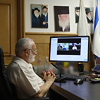 Baal Hasulam, Introduction to the Book, Panim Meirot uMasbirot: Therefore, come and see how grateful we should be to our teachers, who impart us their sacred Lights and dedicate their souls to do good to our souls. They stand in the middle between the path of harsh torments and the path of repentance. They save us from the netherworld, which is harder than death, and accustom us to reach the heavenly pleasures, the sublime gentleness and the pleasantness that is our share, ready and waiting for us from the very beginning, as we have said above. Each of them operates in his generation, according to the power of the Light of his Torah and sanctity.
Baal Hasulam, Introduction to the Book, Panim Meirot uMasbirot: Therefore, come and see how grateful we should be to our teachers, who impart us their sacred Lights and dedicate their souls to do good to our souls. They stand in the middle between the path of harsh torments and the path of repentance. They save us from the netherworld, which is harder than death, and accustom us to reach the heavenly pleasures, the sublime gentleness and the pleasantness that is our share, ready and waiting for us from the very beginning, as we have said above. Each of them operates in his generation, according to the power of the Light of his Torah and sanctity.
Our sages have already said, “You have not a generation without such as Abraham, Isaac, and Jacob.”
On the memorial day of the great Kabbalist, our teacher Rabash, we do not indulge in memories and do not grieve about his passing as is customary in the corporeal world, which is far from the truth. We perceive this day as an opportunity to connect even more strongly, to cleave, to get closer to our root.
Rabash is the revelation of the Creator to us in a certain form and with a certain strength.
We want to thank the Creator for sending us such a messenger through whom He opened up the possibility for us to approach the upper force, to correct ourselves, and bring ourselves into resemblance with the Creator. Through Rabash, we attach ourselves to the Creator because he is an intermediary step between us and the Creator. Due to Rabash, we exist spiritually, and through Rabash, we receive everything necessary for our spiritual ascent.
Rabash is revealed to us as a system connecting us to the Creator through which we can realize ourselves and approach the truth. Therefore, we do not recall the external image of a person and his earthly habits, but consider him first and foremost as a special revelation of the Creator who manifested Himself in this form to us. The more we honor Rabash, the more we approach the Creator, cherishing the special revelation that the Creator made through him. Thus, the higher force called “Rabash” becomes important for us, connecting us with the Creator, and bringing us closer to Him.
To some extent, this revelation of the Creator manifested itself in an external form and then disappeared. Despite this external disappearance, this purification, we need to purify ourselves and reach a connection with Rabash, with this spiritual root as our higher level, through which we can connect with the Creator.
The Creator acts through special souls upon a certain number of lower souls. It is as if the brain sends an order to some important organ so that it sends out signals to various bodily cells under its control, guiding their behavior. Rabash, Baal HaSulam’s successor in our generation, has become a turning point for us, a source of a modern practical method of spiritual ascent.
Therefore, we need to understand the loftiness of this gift we were given: the opportunity to contact him, to absorb from him the method suitable for our time, and to realize it.
How grateful should we be to our teacher Rabash whose soul, his part of reality, was so great that it was able to form and pass the whole method of correction to us? Without Rabash, it would be extremely difficult or even impossible to reach the spiritual world.1
The upper force spreads in the system of Adam HaRishon, revealing itself from top to bottom by animating more and more parts of the soul. And when the light must spread to the lower layers of the system in order to revive the next organs of the body of Adam HaRishon in the chain, then there is a need for the special upper parts of the system to be included in this work.
The development takes place from top to bottom; therefore, when a certain lower stage develops, it causes changes to all the upper stages. Any correction is intended only for the awakening of the lowest souls, called “the last generation,” in order to also bring them into similarity with the Creator.
Rabash symbolizes a huge global force acting on our entire generation. All that remains for us is to implement Baal HaSulam’s method, which Rabash transmitted and explained to us. Therefore, we study Rabash’s articles in order to imagine the world as a general system and to correctly realize it, and Rabash leads us to it in the most practical form.2
Baal HaSulam is revealed to us not as a guide but as a scientist who attained the entirety of creation, from its beginning to its end and beyond. Rabash takes our hand, like an adult takes a child’s hand, and leads us along this path until the very end of correction. He opens the way for us and walks next to us.
The heavy, coarse souls that are revealed in our generation would be unable to merge with the Creator without the method revealed to us by Rabash. After all, he explains how to achieve the states that Baal HaSulam writes about.
Baal HaSulam writes about the upper levels and the upper states as a scientific researcher. Rabash speaks more not about the steps themselves, but about the inner work that a person must do to achieve them, that is, about the means: the environment, unification, and self-annulment.
In his books, Baal HaSulam describes the whole upper system, but these are not textbooks with which you can rise. He is like a composer who wrote a symphony. We first need to learn the musical notations and master the technique of playing scales before we can read this score and play it. To do this, we need another person, a teacher, and Rabash has become such a teacher for us, leading us all along the way.
Without his explanations, we could be confused by Baal HaSulam’s teachings, incorrectly interpreting them however much our imagination allows. Yet if we implement Rabash’s instructions, which let us achieve such an attainment, then we will start understanding Baal HaSulam’s writings.3
From the 1st part of the Daily Kabbalah Lesson 10/3/19, “Memorial Day for Rav Baruch Shalom Halevi Ashlag (Rabash)”
1 Minute 6:10
2 Minute 8:30
3 Minute 19:30
Related Material:
Who Is Rabash?
The Day Of Remembrance Of Rabash
The Rabash
 From My Facebook Page Michael Laitman 10/5/19
From My Facebook Page Michael Laitman 10/5/19
In loving memory of my teacher, Baruch Shalom HaLevi Ashlag (The Rabash)
 From My Facebook Page Michael Laitman 10/5/19
From My Facebook Page Michael Laitman 10/5/19
In loving memory of my teacher, Baruch Shalom HaLevi Ashlag (The Rabash)
 From My Facebook Page Michael Laitman 10/3/19
From My Facebook Page Michael Laitman 10/3/19
On a cold, rainy night in 1979, I could not sleep, my thoughts troubled me. Suddenly I found myself at the wheel, driving without direction. A large sign cut through my thoughts: “Bnei Brak.” I went in. The streets were deserted. At the corner of “Chazon Ish” Street I ran into a passerby. “Where do you study here?” I asked. He looked at me and answered, “Drive to the end of the street, where you will see an orchard. It’s on the other side of it.”
This is how I came to meet my teacher for the first time, Rabbi Baruch Shalom Ashlag (the Rabash), the eldest son and successor of Baal HaSulam – the greatest Kabbalist of the twentieth century. From that moment on my life was never the same.
For the next twelve years I served as his personal assistant and disciple, and I absorbed from him everything that I know in the wisdom of Kabbalah. Every day he would lock himself up on the second floor and write. This is how his profound articles were born, which paved the way for anyone nowadays to carve the spiritual path most suited to them. No one before him had written in such a simple and practical manner. Like a father who guides his children along the path, he takes his readers by the hand and guides them until they discover the true meaning of life.
“And once I have acquired the clothing of love,” he wrote to his students at the end of the well-known letter “Love of Friends,” “Sparks of love promptly begin to shine within me. The heart begins to long to unite with my friends, and it seems to me that my eyes see my friends, my ears hear their voices, my mouth speaks to them, the hands embrace, the feet dance in a circle, in love and joy together with them…” (the Rabash).
After his departure in 1991, people who felt a burning desire in their hearts to reveal their purpose started coming together. Gradually, the “Bnei Baruch” Kabbalah Education & Research Institute was formed, named after Kabbalist Baruch Ashlag. Every morning we study the writings of the Kabbalists, such as The Study of the Ten Sefirot, The Zohar with the Sulam commentary and the writings of Baal HaSulam and the Rabash. We work to share the method with anyone interested, just as my teacher gave me the wisdom of his father.
Today we mark the 28th anniversary of the passing of my teacher, the Rabash, the greatest of the generation. I hope that we will succeed in following his path faithfully.
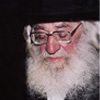 Today, on the day commemorating the anniversary of the death of our teacher, Kabbalist Rabbi Baruch Shalom Ashlag, the Rabash, we do not delve into memories. We place no special emphasis on death anniversary dates, as it is customary among those who are far from the truth. We simply relate to such days as signs in order to connect and adhere more, or at least, come closer to our root.
Today, on the day commemorating the anniversary of the death of our teacher, Kabbalist Rabbi Baruch Shalom Ashlag, the Rabash, we do not delve into memories. We place no special emphasis on death anniversary dates, as it is customary among those who are far from the truth. We simply relate to such days as signs in order to connect and adhere more, or at least, come closer to our root.
Why? It is because, who really is Rabash? Rabash is a certain extent of the Creator’s revelation toward us.
We would like to express our gratitude to the Creator for Rabash. He sent us a messenger through which we were given the opportunity to come closer to the Creator: to correct and adapt ourselves in equivalence of form with the upper force.
This is how we connect ourselves to Rabash and to the Creator.
Rabash is a degree between us and the Creator. We receive everything through Rabash, his entire spiritual ascent. Each person is created and exists through his friends and teacher, but Rabash truly emerges as a system. He reveals to us a form of connection with the Creator through which we truly realize ourselves and come closer to the truth.
First and foremost, we need to paint that picture to ourselves, that we’re not dealing with externalities, i.e. with a person’s habits and behaviors. We firstly need to see this specific revelation of the Creator toward us, that the Creator revealed Himself in this distinct manner.
Therefore, the more that we appreciate Rabash, the closer we come to the Creator.
We appreciate that degree of revelation He made for us through this particular higher force called “Rabash.” It became important to us. It connected and brought us closer to the Creator.
On this day, we will read excerpts discussing this topic. Also, we will try to accurately calibrate ourselves to that form, which became revealed in its externality to a certain extent, and afterward became concealed, i.e. departed.
Moreover, despite its departure, its purification, we need to elevate ourselves—to become purified by ourselves, arriving at a connection with that unique spiritual root, and seeing our higher degree in it. Through establishing such a connection with our higher degree, we can then further progress to the Creator.
Based on the Lesson on the topic of “Memorial Day for Rav Baruch Shalom Halevi Ashlag (Rabash)” – Oct. 3, 2019
Related Material:
Lesson on the topic of “Memorial Day for Rav Baruch Shalom Halevi Ashlag (Rabash)” – Oct. 3, 2019
 From My Facebook Page Michael Laitman 8/16/19
From My Facebook Page Michael Laitman 8/16/19
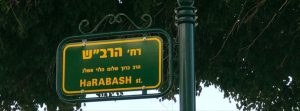
Today, on Friday, August 16, 2019, the street upon which the central building of the Bnei Baruch Kabbalah Education and Research Institute is located—called in Israel, Kabbalah L’Am –Bnei Baruch Association—will have its name changed to “Rabash Street” in commemoration of the great Kabbalist Baruch Shalom HaLevi Ashlag (the Rabash)—a decision made by the Municipality of Petah Tikva, headed by Rami Greenberg.
Rabash was a special Kabbalist who acted for the unity of all the people of Israel: religious and secular, all races and factions as one. He was very concerned that the true Torah of Israel—unity of the people—would reach the ears of all people and increase unity in society: a power capable of healing all of the world’s problems.
As a result of Rabash’s many years of devoted work, a group became established—men, women and children—who wanted to realize the vision of Kabbalist Yehuda Leib HaLevi Ashlag (Baal HaSulam), as he specified in The Writings of the Last Generation: a vision of a corrected and unified human society. This group became known as “Bnei Baruch” (i.e. “the sons of Baruch Shalom HaLevi Ashlag [the Rabash]”). We, as members of this group, understand that it is a long path, as Rabash himself described in his first article, that “although we have not yet achieved this goal, we have the desire to achieve it. And this, too, should be appreciated by us, for even though we are at the beginning of the way, we do hope to achieve the exalted goal.” (Rabash, “The Purpose of Society,” 1984.)
We—the members of Bnei Baruch, the students of the method of connection and the wisdom of Kabbalah that Rabash received from his teacher and father, Baal HaSulam, and passed down to us—have a strong will and determination to continue the path of our teacher. We are currently in a lab-like environment, learning upon ourselves how tocreate a new unified society and increasing our understanding of what that means, because we are still unworthy of being such a society.
Rabash is our teacher, the source and fountain from which we have received our entire method. Therefore, we are very moved and delighted that the residents and municipal authorities of Petah Tikva recognize us as a positive force and valuable addition to the city, deciding to change the name of the street where our world center is located, to the name of our teacher, Rabash.
We will endeavor to give back to the city’s residents, and to all who know our teacher and what he stood for, our maximal efforts to realize our teachers’ vision of a new unified society. I very much hope that we will reach a state where Rabash’s great name will be promoted in the world, as the one who opened the path of Torah, the method of correction, and that his method will bring about the unification of human society in Israel and around the world
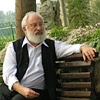 Question: I believe Baal HaSulam and you, but I cannot get close to Rabash. How can I do this?
Question: I believe Baal HaSulam and you, but I cannot get close to Rabash. How can I do this?
Answer: Baal HaSulam is a great Kabbalist who attained, generalized, and systematized the science of Kabbalah. We are engaged in Kabbalah in order to master it not in the form of science, but in the form of a method of spiritual attainment. These are two different things, although interrelated.
When a person wants to enter the spiritual world himself, then Baal HaSulam is a theoretician for him. He cannot lead a person forward. Rabash leads us forward, explaining at every step where we are, what to do, how to act, what interaction to have in a group, with ourselves, and with the Creator.
I remember well how he wrote his first article, sitting next to me on a park bench. I gave him an aluminum cigarette wrapper, and on the back of it, he wrote a small article—the first of the future three-volume book.
At first, I asked him questions and he gave written answers to them. His first articles appeared this way. Later he wrote by himself.
Without these articles, we could not advance. At each morning lesson we devote an hour and a half to two hours to the articles of Rabash, only half an hour to The Study of the Ten Sefirot (Talmud Eser Sefirot,) and half an hour to the articles of Baal HaSulam.
It is even incomprehensible how people could master the spiritual space before Rabash, how they could feel it in themselves and advance to different levels. That is what he teaches us, because in our time, souls that descend into this world need it.
Rabash is a practicum of Kabbalah and Baal HaSulam is more a theoretical Kabbalist.
In order to get closer to Rabash, one must read his articles and listen to our lessons on them. All of them are in the archive, you can use them free of charge, access is free. Go ahead, dare!
[243162]
From the Kabbalah Lesson in Russian 12/23/18
Related Material:
Who Are Rabash’s Articles For?
For Rabash’s Memorial Day
The Articles Of Rabash
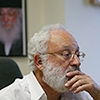 Remark: Over the many years of practicing Kabbalah, we have studied the articles of Baal HaSulam and Rabash dozens of times. The most interesting thing is that remembering almost every line by heart, you understand that as a result, you do not know anything. On one hand, it is amazing, but on the other hand, it is frightening.
Remark: Over the many years of practicing Kabbalah, we have studied the articles of Baal HaSulam and Rabash dozens of times. The most interesting thing is that remembering almost every line by heart, you understand that as a result, you do not know anything. On one hand, it is amazing, but on the other hand, it is frightening.
My Comment: This happens because our abilities to analyze the text, to include it in ourselves, change. Therefore, each time everything seems completely new, on a new level. This is the property of Kabbalistic texts and of those who read them.
Remark: Rabash did not finish any literary institute, did not study the rules of writing articles, but expressed himself very clearly, according to the rules of the genre.
My Comment: This is not surprising to me because a person who feels the inner meaning of nature, its laws and their current, writes in accordance with this. All the laws of logic, all the points of the coup already exist in him.
In the same way, it seems to playwrights that they make the rules for writing literary works, but in fact, they also act out their inner desires, perhaps not yet corrected but in some ways already developed.
Gradually, we will understand that real playwriting lies in spirituality. It is precisely the attainment of spiritual properties that will bring out literature and any expressions of human relations to the level of truth.
[228590]
From KabTV’s “The Last Generation” 1/2/18
Related Material:
Who Are Rabash’s Articles For?
How To Hear Rabash’s Articles
Reading A Kabbalistic Text